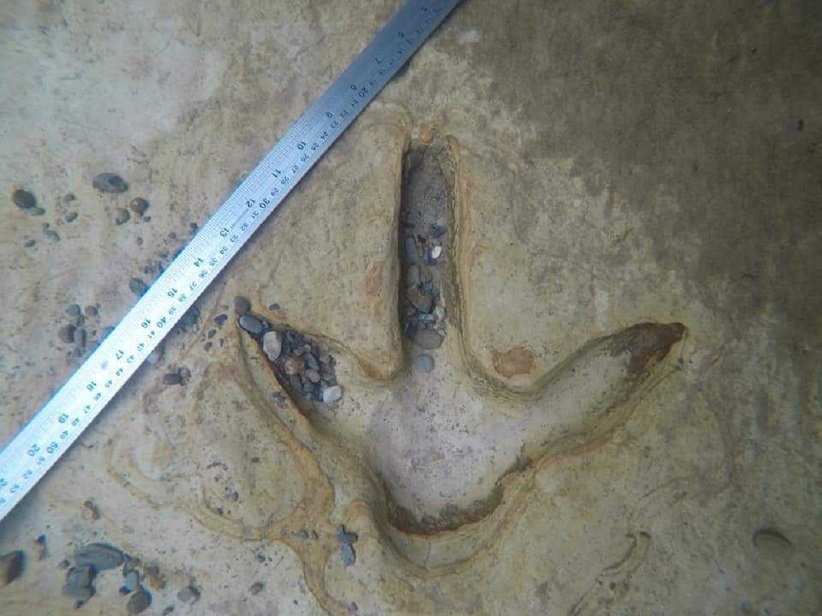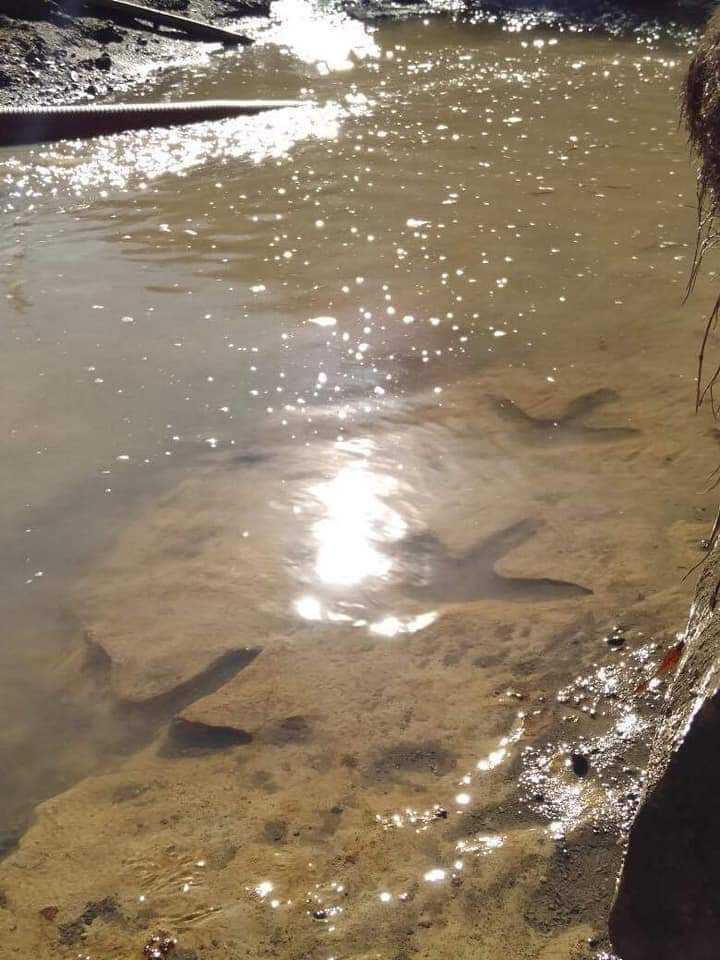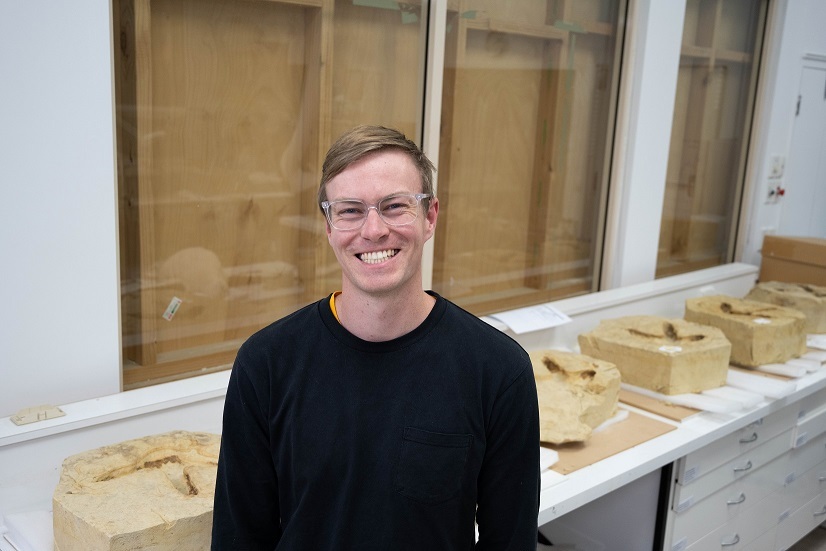Moa footprints older than finder expected
Alexia Anderson
18 November 2023, 4:30 PM
 Michael Johnston-Graham with one of the moa footprints he stumbled across. PHOTO: Tūhura Otago Museum
Michael Johnston-Graham with one of the moa footprints he stumbled across. PHOTO: Tūhura Otago MuseumManiototo could well have just unearthed its own version of Indiana Jones.
Michael Johnston-Graham, the man who discovered large fossilised footprints in the Kyeburn River four years ago, this week learned they were 3.6 million-year-old Moa footprints.
Although he made the discovery, Michael is very quick to give full credit to the team at Tūhura Otago Museum, and other groups they have worked alongside, due to the countless hours they have poured into researching his find.
“I didn’t really do anything. I just found them and let the museum know. They did everything.”
Michael, who lived in the Maniototo at the time, was walking his boss’ dogs when he made the discovery, a large-scale footprint etched into the Kyeburn Riverbed, about 1m under water.
“Just as I was walking in the river I saw one of them. I didn’t think too much of it, and then I saw another one and another one.”
There were seven in total.
He took a couple of photos on his phone and sent them to the museum.

Moa footprints discovered in the Maniototo are 3.6million years old. PHOTO: Michael Johnston-Graham
Four years later, the team at Tūhura Otago Museum can now reveal just how historic and significant Michael’s find was.
Not only are they millions of years old, they are also the only ones reportedly in the South Island.
Michael, who is now based in Alexandra, was surprised to learn just how old they were.
“I didn’t expect it to be that old. I was thinking a couple of thousand years old, not millions of years.”

The Kyeburn River flowing over the footprints. PHOTO: Michael Johnston-Graham
He said at the time of his discovery, he was aware they could have been of some significance.
“No one’s got an ostrich farm in Ranfurly so [I knew it wasn’t] an escapee,” he joked.
The majority of the footprints were 46mm deep, 272-300mm wide and 260-294mm long. An associated separate footprint was 448mm wide and 285mm long.
A report on the findings has recently been published in the Journal of the Royal Society of New Zealand.
A team consisting of researchers from Tūhura Otago Museum, the Department of Geology – University of Otago, Victoria University of Wellington, the Australian Nuclear Science and Technology Organisation, and Aukaha have identified the footprints as a moa from the Emeidae family, probably from the genus Pachyornis, with a mean mass of 84.61kg, travelling at about 2.61kmh.
The single adjacent footprint was made by an individual from the family Dinornithidae, most likely from the genus Dinoris, with an estimated mass of 158kg.
The footprints represent the second earliest fossil record of moa.
A lot of work and care was taken to extract the fossilised footprints, a collaboration which involved Tūhura Otago Museum, the University of Otago and local rūnaka.
The research team have now compiled their findings, which can be viewed in their published report.

Kane Fleury with the extracted footprints in the background. PHOTO: Tūhura Otago Museum
Lead author Kane Fleury, who is the natural science curator at Tūhura Otago Museum, said the release of the research marks a satisfying milestone in a process that began when he responded to Michael's Facebook Messenger inquiry four years ago.
“This whole experience has been incredible”, he said.
“A lot of luck goes into the fossilisation of footprints—conditions had to be absolutely perfect for these tracks to be preserved, and they had to be just right again to expose the fossils without destroying them. The public really got on board with how spectacular this find was and had heaps of questions, so it’s a great feeling to be able to follow up with some answers.”

NEWS
WHAT'S ON





